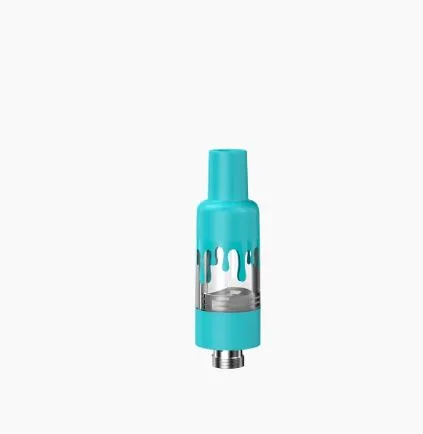How to Apply Concrete Release Agents? A Very Simple Guide
Concrete release agents are very important in the construction world. They help builders remove concrete from moulds and forms without damage. When you use a release agent, the concrete surface becomes smooth and clean. It also makes your work faster and easier.
In this article, we will explain how to apply concrete release agents in simple terms. We will also explain why choosing a good concrete release agent manufacturer is essential. If you want to learn more, then keep reading.
What Is a Concrete Release Agent?
A concrete release agent is a special liquid or spray applied to moulds and formwork before pouring concrete. Its main job is to stop the concrete from sticking. It creates a thin layer between the mould and the concrete.
Many types of release agents are available:
- Oil-based release agents
- Water-based release agents
- Chemical release agents
- Spray release agents
Good quality release agents make the concrete surface smooth and prevent cracks, stains, or holes.
Why Are Release Agents Important?
Release agents are used for many reasons:
- They prevent concrete from sticking
- They extend the life of moulds
- They give a clean and smooth finish
- They reduce cleaning time
- They save labour costs
- They make construction faster
If you choose a high-quality product from a trusted concrete release agent manufacturer, you get better performance and fewer problems during work.
Tools You Need Before Applying Release Agents
You do not need many tools. Simple tools are enough:
- Brush
- Roller
- Spray bottle
- Cloth
- Gloves
These tools help you apply the agent evenly.
Step-by-Step Guide: How to Apply Concrete Release Agents
You Must Follow these simple steps for the best results.
Step 1: Clean the Mold or Formwork
Before applying the release agent, make sure the mold is clean.
Remove:
- dust
- dirt
- old concrete
- oil
- water
A clean surface helps the release agent work better.
Step 2: Choose the Right Release Agent
Like, Different construction projects need different types of release agents.
For example:
- Water-based agents are suitable for indoor use
- And Oil-based agents work well outdoors
- Spray agents are easy for large areas
If you want to learn more about which type suits your project, you can always check guides from a professional concrete release agent manufacturer.
Step 3: Shake or Mix the Release Agent
Some release agents need mixing before use, and you should shake the bottle or stir the liquid to make it smooth.
This ensures even coating on the mould.
Step 4: Apply a Thin and Even Coat
You can apply the release agent in many ways:
- Spray it
- Brush it
- Roll it
Always apply a thin, even layer. Do not apply too much because:
- It may cause stains
- It may affect the concrete finish
- It may weaken the bond
A light coat works best.
Step 5: Let It Dry for a Few Minutes
After making use of the discharge agent, wait for it to dry a touch. This facilitates shaping a barrier between the shape and the concrete.
The drying time is typically short; however, it relies upon:
weather
temperature
Type of release agent
Most sellers dry within a few minutes.
Step 6: Pour the Concrete
Now you can pour the concrete into the shape.
Ensure:
The form is tight
Concrete is poured slowly
No air bubbles are fashioned
When the discharge agent is applied correctly, the concrete will unfold effortlessly.
Step 7: Remove the Mold After Concrete Hardens
Wait till the concrete has hardened. Then carefully remove the mildew.
Due to the release agent:
mold comes off effortlessly
The surface stays clean
No cracks seen
This is the main advantage of using release retailers effectively.
Common Mistakes to Avoid
Like People sometimes make simple mistakes that can affect the final result.
Here are common mistakes:
1. Using Too Much Release Agent
A thick coating creates marks on the concrete.
2. Not Cleaning the Mold First
Dirt stops the release agent from working well.
3. Using Low-Quality Products
Cheap release agents can damage molds and cause stains.
4. Applying on Wet Surfaces
Water reduces the effect of the release agent.
By avoiding these mistakes, you get a cleaner and better finish.
How to Choose a Good Release Agent
Always buy release agents from a trusted concrete release agent manufacturer. Good manufacturers offer:
- high-quality formulas
- long-lasting molds
- smooth concrete finish
- better protection
- eco-friendly options
They also test their products before selling them. This improves performance and prevents costly errors.
Benefits of Using High-Quality Release Agents
High-quality release agents offer:
- faster work
- easy mold removal
- less cleaning time
- long mold life
- perfect concrete finish
- no stains or marks
- better productivity
Good agents save both time and money.
Where Are Release Agents Used?
Release agents are used in many concrete applications, such as:
- walls
- floors
- columns
- blocks
- panels
- bridges
- precast concrete molds
Wherever concrete is poured, a release agent is helpful.
Conclusion
Applying concrete release retailers is an easy project, but it requires care. First, smooth the mold, pick the proper product, use a skinny layer, allow it to dry, and then pour the concrete. When completed correctly, you get a smooth, even, and ideal concrete end.
If you need high-class results, usually select a dependable concrete launch agent producer. And in case you need to analyse extra about launch retailers, their use of or nice practices, look for extra guides or ask professionals.





